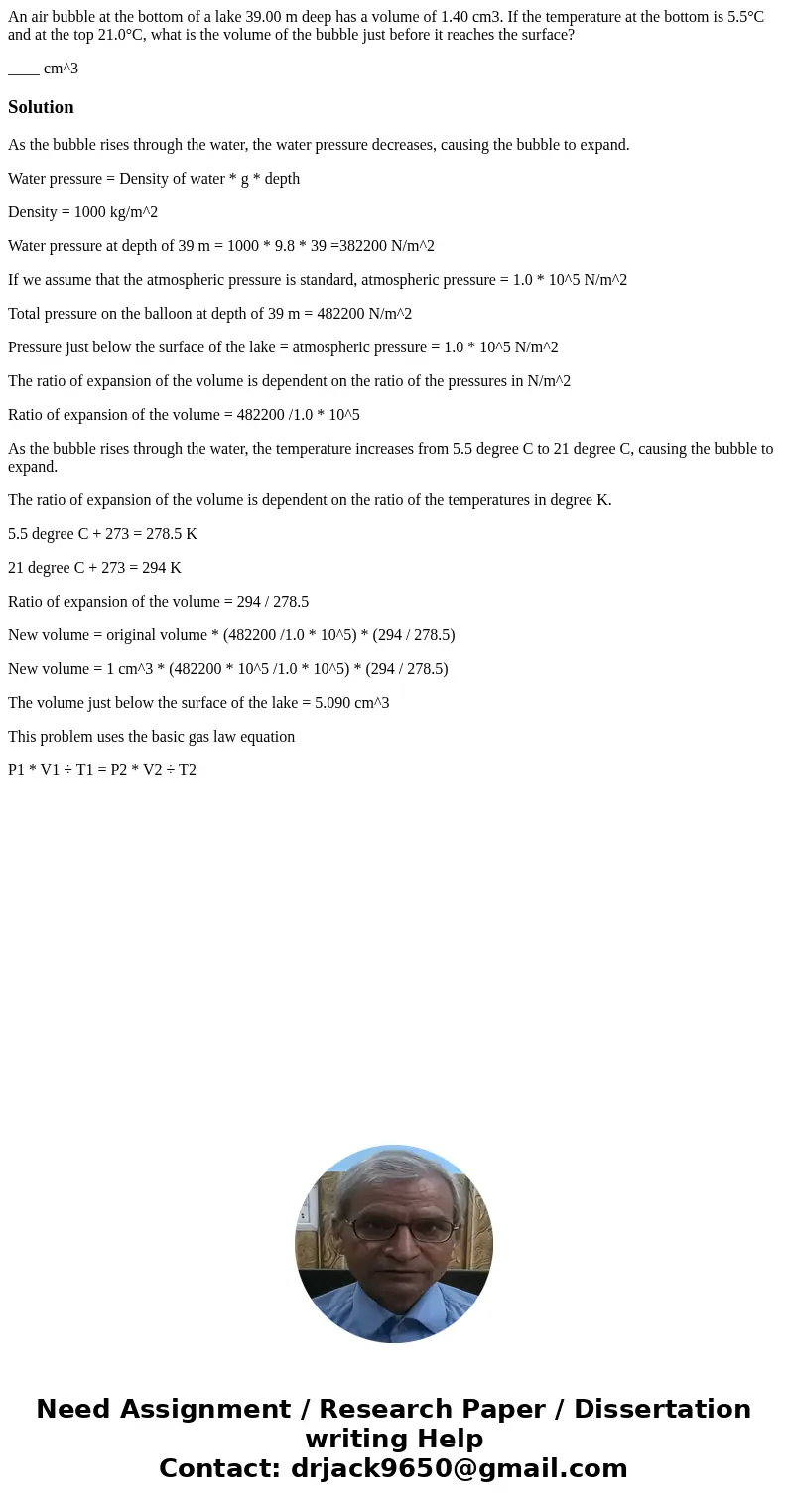An air bubble at the bottom of a lake 3900 m deep has a volu
An air bubble at the bottom of a lake 39.00 m deep has a volume of 1.40 cm3. If the temperature at the bottom is 5.5°C and at the top 21.0°C, what is the volume of the bubble just before it reaches the surface?
____ cm^3
Solution
As the bubble rises through the water, the water pressure decreases, causing the bubble to expand.
Water pressure = Density of water * g * depth
Density = 1000 kg/m^2
Water pressure at depth of 39 m = 1000 * 9.8 * 39 =382200 N/m^2
If we assume that the atmospheric pressure is standard, atmospheric pressure = 1.0 * 10^5 N/m^2
Total pressure on the balloon at depth of 39 m = 482200 N/m^2
Pressure just below the surface of the lake = atmospheric pressure = 1.0 * 10^5 N/m^2
The ratio of expansion of the volume is dependent on the ratio of the pressures in N/m^2
Ratio of expansion of the volume = 482200 /1.0 * 10^5
As the bubble rises through the water, the temperature increases from 5.5 degree C to 21 degree C, causing the bubble to expand.
The ratio of expansion of the volume is dependent on the ratio of the temperatures in degree K.
5.5 degree C + 273 = 278.5 K
21 degree C + 273 = 294 K
Ratio of expansion of the volume = 294 / 278.5
New volume = original volume * (482200 /1.0 * 10^5) * (294 / 278.5)
New volume = 1 cm^3 * (482200 * 10^5 /1.0 * 10^5) * (294 / 278.5)
The volume just below the surface of the lake = 5.090 cm^3
This problem uses the basic gas law equation
P1 * V1 ÷ T1 = P2 * V2 ÷ T2

 Homework Sourse
Homework Sourse